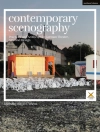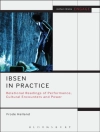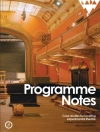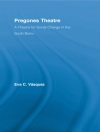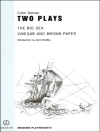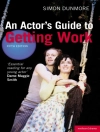Marking Time: Performance, archaeology and the city charts a genealogy of alternative practices of theatre-making since the 1960s in one particular city – Cardiff. In a series of five itineraries, it visits fifty sites where significant events occurred, setting performances within local topographical and social contexts, and in relation to a specific architecture and polity. These sites – from disused factories to scenes of crime, from auditoria to film sets – it regards as landmarks in the conception of a history of performance.
Marking Time uses performance and places as a means to reflect on the character of the city itself – its history, its fabric and make-up, its cultural ecology and its changing nature. Weaving together personal recollections, dramatic scripts, archival records and documentary photographs, it suggests a new model for studying and for making performance…for other artistic practices…for other cities.
Marking Time is an urban companion to the rural themes and fieldwork approaches considered in ‘In Comes I’: Performance, Memory and Landscape (University of Exeter Press, 2006).
قائمة المحتويات
Preface
Map of the book
Introduction: Cardiff, Performance, Premise, City, Archaeology
NORTH
University Arts Building; University Main Building; University Assembly Hall; 47 Park Place; Sherman Theatre; Sherman Arena Theatre; Cathays Park; National Museum Wales; Park House, 20 Park Place; University Engineering Building
EAST
Bridgend Street; Topaz Street; Ruby Street; Metal Street; Sanquahar Street; Moira Terrace; Adamsdown Cemetery; Howard Gardens; ‘The Vulcan’; ‘The Big Sleep’
SOUTH
Windsor Esplanade; 44/46 James Street; Mount Stuart Square; 7 James Street; Wales Millennium Centre; Senedd/Welsh Assembly Government; 126 Bute Street; Butetown; St Mary’s Church; Callaghan Square
WEST
House; Street; School; Llanover Hall; Chapter; Chapter yard; Chapter Theatre; The Gym; Cowbridge Road; ‘Llwyn yr Eos’
CENTRAL
Queen Street East; Queen Street West; Hayes Island; Morgan Arcade; Caroline Street; Central Station; St Mary’s Street; Westgate Street; Cardiff Castle; Parks
Postscripts: Theatre, Archaeology, City, Cardiff
عن المؤلف
Mike Pearson was Leverhulme Research Fellow and Professor of Performance Studies at Aberystwyth University. He was co-author with Michal Shanks of Theatre/ Archaeology (2001) and author of ‘In Comes I’: Performance, Memory and Landscape (2006); Site-Specific Performance (UEP, 2010); Mickery Theater: An Imperfect Archaeology(2011) and Marking Time: Performance, Archaeology and the City (UEP, 2013)He made theatre professionally for over forty years, notably with Brith Gof (1981-97) and Pearson/Brookes (1997-present). With Mike Brookes, he co-conceived and co-directed The Persians (2010) and Coriolanus for National Theatre Wales, the latter in collaboration with the Royal Shakespeare Company as a contribution to the World Shakespeare Festival/London 2012.





